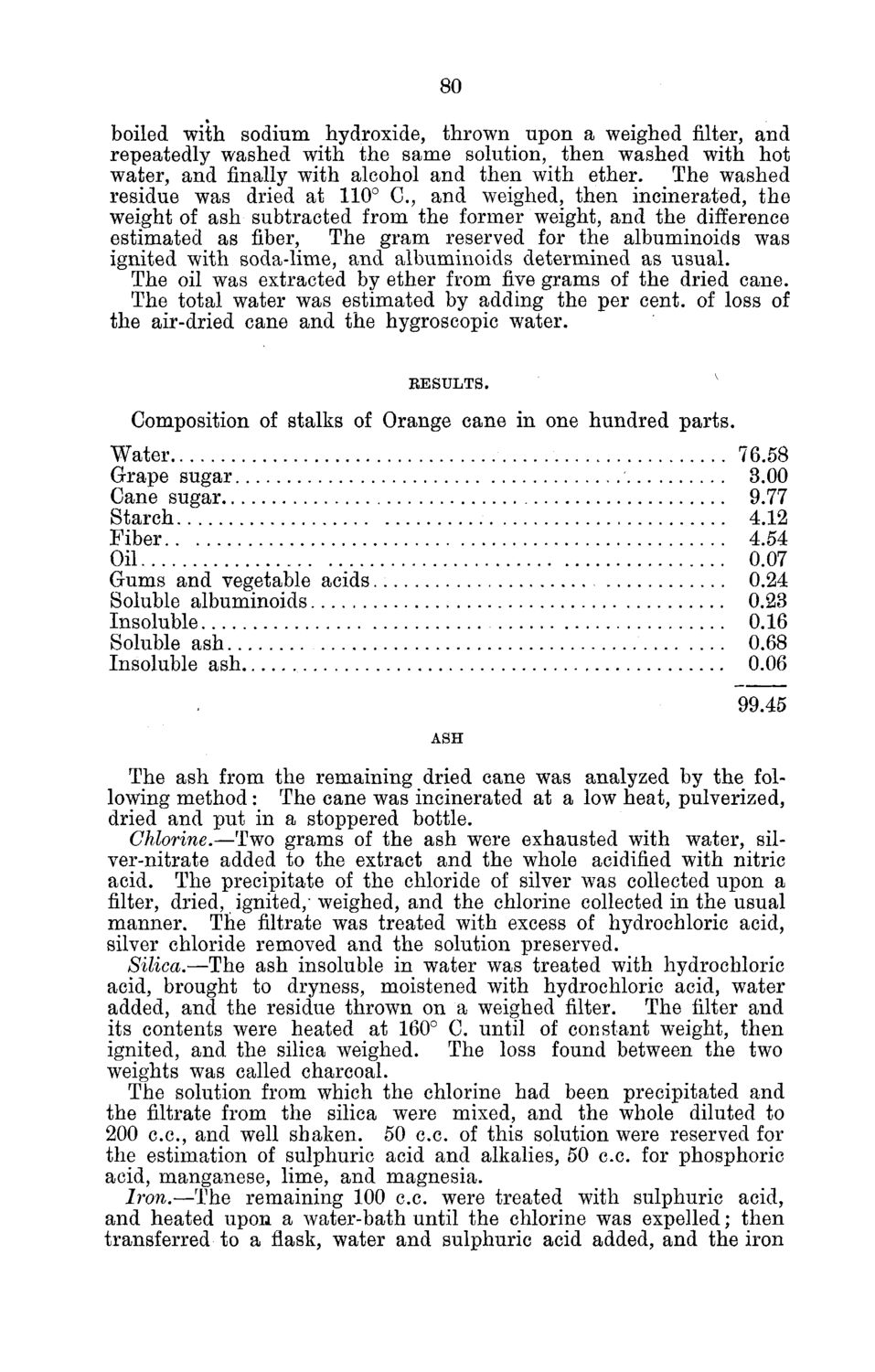| |
| |
Caption: Board of Trustees Minutes - 1882
This is a reduced-resolution page image for fast online browsing.

EXTRACTED TEXT FROM PAGE:
80 boiled with sodium hydroxide, thrown upon a weighed filter, and repeatedly washed with the same solution, then washed with hot water, and finally with alcohol and then with ether. The washed residue was dried at 110° C , and weighed, then incinerated, the weight of ash subtracted from the former weight, and the difference estimated as fiber, The gram reserved for the albuminoids was ignited with soda-lime, and albuminoids determined as usual. The oil was extracted by ether from five grams of the dried cane. The total water was estimated by adding the per cent, of loss of the air-dried cane and the hygroscopic water. RESULTS. Composition of stalks of Orange cane in one hundred parts. Water Grape sugar Cane sugar Starch Fiber Oil Gums and vegetable acids Soluble albuminoids Insoluble. Soluble ash Insoluble ash 76.58 3.00 9.77 4.12 4.54 0.07 0.24 0.23 0.16 0.68 0.06 99.45 ASH , The ash from the remaining dried cane was analyzed by the following method: The cane was incinerated at a low heat, pulverized, dried and put in a stoppered bottle. Chlorine.—Two grams of the ash were exhausted with water, silver-nitrate added to the extract and the whole acidified with nitric acid. The precipitate of the chloride of silver was collected upon a filter, dried, ignited,* weighed, and the chlorine collected in the usual manner. The filtrate was treated with excess of hydrochloric acid, silver chloride removed and the solution preserved. Silica.—The ash insoluble in water was treated with hydrochloric acid, brought to dryness, moistened with hydrochloric acid, water added, and the residue thrown on a weighed filter. The filter and its contents were heated at 160° C. until of constant weight, then ignited, and the silica weighed. The loss found between the two weights was called charcoal. The solution from which the chlorine had been precipitated and the filtrate from the silica were mixed, and the whole diluted to 200 c.c, and well shaken. 50 c.c. of this solution were reserved for the estimation of sulphuric acid and alkalies, 50 c.c. for phosphoric acid, manganese, lime, and magnesia. Iron.—The remaining 100 c.c. were treated with sulphuric acid, and heated upon a water-bath until the chlorine was expelled; then transferred to a flask, water and sulphuric acid added, and the iron
| |